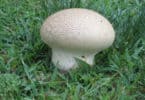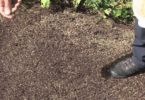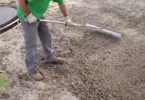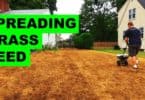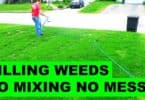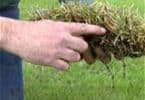The lawn is the most vital part of the garden. It makes a statement about your home and generally takes a lot of time and care to keep it in good condition. Springtime is the perfect season to work on your lawn to get it in peak condition for the Summer months ahead. One Springtime lawn maintenance task is ridding your lawn of pesky moss growth.
Many people consider moss to be a frustrating lawn care problem and an unwanted addition to their yard. Getting rid of moss in your lawn is only a matter of making your lawn an unsuitable environment for moss to grow.
Moss is an opportunistic species. Contrary to popular belief, moss will not take over or push out the grass in your lawn nor will it kill plants to take hold. Generally, moss will move in to an area where nothing is growing.
Moss growing in your yard is a good indication of a deeper rooted problem with your lawn. The very presence of moss growth in your lawn is a clear signal of what your lawn may be lacking and it is taking advantage of empty soil dead grass left behind. Simply providing your lawn with what it is lacking will allow you to cultivate grass in areas where moss is taking over.
In order to totally rid your lawn from the plague of moss is to first treat the deeper underlying issues with your lawn. One of the first things you should do is to check your lawn for compacted soil. Compacted soil kills the root system of grass, thus creating an empty area for moss to hold onto. Aeration of the soil should be done each year to help reduce compaction of the soil. Another element that leads to the growth of moss is poor drainage. Soil that does not drain properly and constantly stays damp will suffocate grass roots and provide an environment that will become a breeding ground for moss and its next best friend. PH levels in the soil affect both growth of moss and grass. For adequate grass growth, it needs moderate to slightly alkaline soil. Low pH levels of soil or if the soil is high in acid, the grass in your lawn will die and the moss will thrive. The pH level of soil should be between 5.8 to 6.5. PH kits can be purchased at nurseries or at lawn and garden stores so you can check the pH level of the soil in your lawn. The lack of sunlight and shady areas in your yard are also factors which makes it difficult for grass to grow. This type of environment is the preferred light source to make moss grow. Cutting back trees to allow more sunlight to your lawn will help to rid your lawn of moss.
After identifying and correcting the source of what was causing your grass to die and the moss to grow, you can begin the process of killing the moss and replanting the grass. Begin the process by applying a good moss killer to your lawn. EverGreen Complete is a good example of one of these products as it contains a four in one formulation which kills moss, controls weeds, provides nutrients for the grass and improves water absorption. After the moss is completely dead, you will need to give your entire lawn a good raking to rid it of debris. Be certain however not to rake your lawn until all the moss is dead or you will only spread moss spores over the rest of your yard. Now you can seed your lawn with your desired grass seed.
It is more important to know how to keep a healthy lawn than to know how to kill moss. Without taking the steps necessary to maintain a healthy lawn, you will find yourself plagued with moss invasions time and time again.
<>


